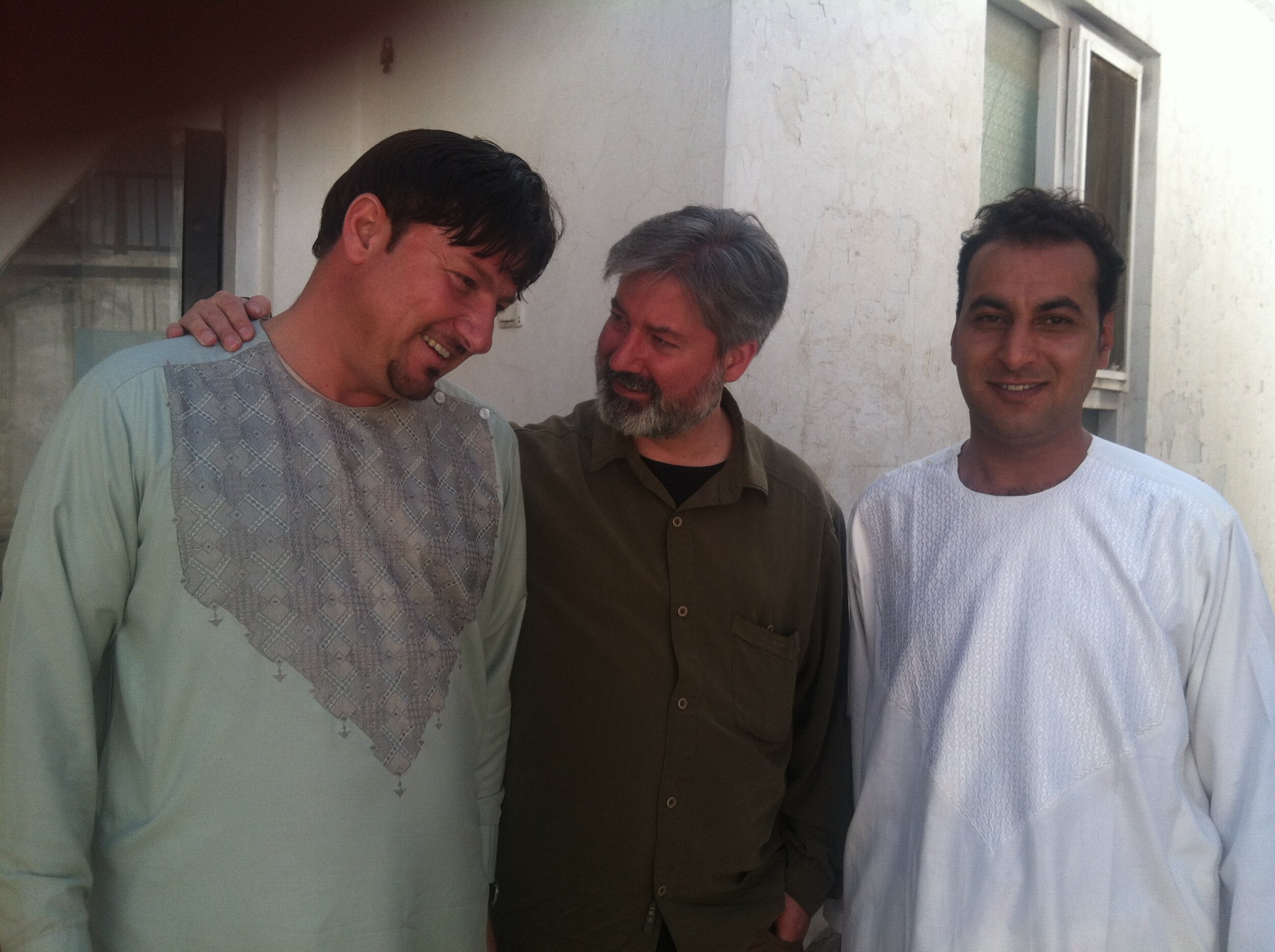Making a feature documentary tends to be a long process of gathering raw material around a central idea or story and then piecing that material together into something far more compact. In the process, many wonderful things are recorded and later discarded when they don’t find a place in the film.
With Saboor Arghandiwal on a filming day in Kabul
While filming Angels Are Made Of Light in Kabul from 2011-2015 my schedule was divided between filming days, translations days, audio-interview days, still photography days, ministry paperwork days, and music/audio days.
Normally it was just me and one other person in the crew - either Jamshid Amiry or Saboor Arghandiwal, sometimes others, but they were the main two guys - and so we had to divide up the work like that: one main focus per day. Traffic is so bad in Kabul that we could only succeed in traveling out to one location, doing something for a couple hours - filming or paperwork, then driving back through the endless traffic. Simple errands would take up an entire day in Kabul because of the seemingly permanent traffic jam.
Somewhere in those three years of production - in 2013 - I started to feel confident enough in the way filming was going that I began branching out to do things like explore the national film archive, and make field recordings of music with Afghan musicians.
I recorded all kinds of different traditional instruments - together and separately, trying to build up a library of Afghan musical sounds in case a future composer on the film I was making wanted some cultural reference, or to sample from the authentic sounds of Kabul.
With Khalid Hashemi (left) and Zalgi Kabuli, after a recording session in Kabul, 2013
Among the musicians I recorded were Khalid Hashemi and Zalgi Kabuli, rubab and harmonium players, respectively. Although the recordings we made were never used in the film, I think some of them are nice enough to listen to for pleasure, and I present them here:
We made these recordings in a closet-sized recording space in west Kabul in April, 2013. I used the wonderful Sound Devices 788T recorder, with three Neumann microphones - the U87, KMR185 on the rubab and the KM81i on the harmonium.
It was a cramped space with no way to isolate the vibrant sound of the rubab from the quieter harmonium, so using the directional KMR81i - mounted directly above the harmonium - helped to make a focused signal for the reedy, hand-operated squeezebox drone tones, a background to the rubab to play against, which I made deeper and more expansive in post.
Meanwhile, the Afghan rubab, as a musical instrument, poses some challenges for recording. The rubab (robab, rabab) has a distinctly twangy, metallic sound - particularly if microphones are placed close enough to hear the subtle details and overtones of the instrument.
I mixed these in Kabul in Logic Pro on a laptop; I have used post processing with a Tube-Tech CL1B compressor in software emulation, as well as some spacial effects and EQ. Particularly in the Afghan Lullaby track I have tried to reduce some of the more central, metallic frequencies of the rubab - in effect to create my own version of the way the instrument sounds - to make a more woody, golden-sounding tone.
I hope you enjoy listening to the recordings as much as I enjoyed making them.
Recording Afghan musicians in my bedroom in Kabul. This day featured Mohammed Hamahang on tabla, Hanif Hassan on rebab, and Mohammed Rohit Nabizada on dilruba.


